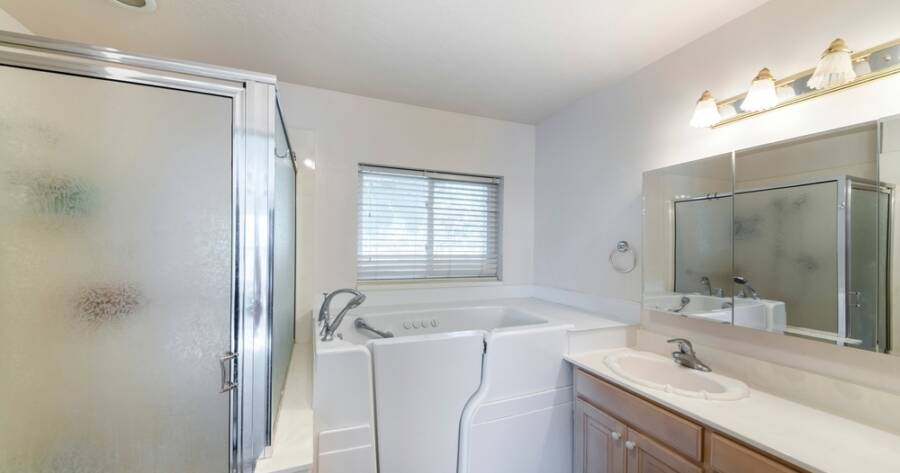Walk-in tubs have emerged as a vital solution for those seeking safety, comfort, and therapeutic benefits in bathing. Their features, designed to enhance accessibility and independence, appeal particularly to seniors and individuals with mobility challenges. Additionally, the therapeutic advantages, cost considerations, and customization opportunities position walk-in tubs as a worthwhile investment in personal well-being and home accessibility.
Understanding the Appeal of Walk-in Tubs
Walk-in tubs have gained significant attention in recent years, particularly among seniors and individuals with mobility challenges. They are celebrated for their commitment to safety, comfort, and therapeutic benefits. Key features of these tubs, such as non-slip surfaces, grab bars, and low-threshold entry, make them a preferred choice for those aiming to reduce the risk of falls throughout the bathing process. This design consideration is particularly crucial for individuals prioritizing independence and self-reliance in their daily routines.
Beyond safety, walk-in tubs enhance accessibility, allowing users to bathe without assistance. Built-in seating, handheld shower wands, and user-friendly controls are integral to this user-centered design. These features empower individuals, including those confined to wheelchairs, to engage in personal care activities with greater autonomy. The therapeutic advantages offered by walk-in tubs, such as hydrotherapy, are instrumental in managing chronic pain from conditions like arthritis and fibromyalgia by providing non-pharmaceutical relief through hydrotherapy.
Therapeutic and Health Benefits
Walk-in tubs are often seen as more than just a safe bathing solution; they also play a pivotal role in enhancing health and wellness. These tubs are equipped with water and air jets that offer therapeutic benefits, which include soothing muscle aches, improving circulation, and reducing stress by offering a spa-like experience at home. For individuals with arthritis, fibromyalgia, or back pain, these features can provide significant relief by leveraging the benefits of hydrotherapy to alleviate pain and inflammation.
Moreover, soaking in a walk-in tub can enhance blood circulation and support heart health. As hot water dilates blood vessels, it promotes better circulation, ultimately relieving heart strain. Studies, such as those conducted in Japan, suggest that regular hot baths can reduce the risk of stroke and heart disease. Walk-in tubs additionally aid in managing conditions like type 2 diabetes by lowering blood sugar levels and improving insulin sensitivity, as demonstrated in medical studies from the New England Journal of Medicine, highlighting how regular use of warm water immersion can lead to improved metabolic control by fostering better metabolic health.
Cost Considerations and Investment Potential
Investing in a walk-in tub often comes with financial considerations that can impact decision-making. Although the initial costs can be high due to the need for potential bathroom modifications and professional installation, many view walk-in tubs as a long-term investment in quality of life. These costs may encompass purchasing the tub itself, plumbing upgrades, electrical work, and bathroom renovations. An understanding of the total cost, including any additional installations or customizations, is essential to make informed decisions.
Walk-in tubs can also affect a home’s resale value positively. Homes with aging-in-place amenities are often favored by buyers looking for accessible living solutions. This demographic demand can enhance the appeal of the property, especially for those prioritizing safety and luxury combined. Despite these benefits, the water and energy use associated with walk-in tubs can lead to higher utility bills. Therefore, features such as fast-fill and drain capabilities are valuable, as they can minimize ongoing costs and offer convenience without compromising on functionality.
Exploring Customization and Features
Customization is a standout feature of many walk-in tubs, allowing owners to tailor their tub to meet specific needs and preferences. This includes choosing different types of jets, adjusting door placements, and selecting additional accessories like chromotherapy lights or aromatherapy dispensers. Such customization provides a personalized bathing experience and enhances the therapeutic benefits of the tub. Brands like Kohler, Safe Step, and Whirlpool offer a variety of options, ensuring that users find a style and function that suits their unique requirements while emphasizing individual needs.
In addition to these customization options, many companies offer professional installation services that ensure a seamless integration of the tub into existing bathroom spaces. This professional guidance is crucial to maintaining both the functionality and aesthetic of the bathroom, supporting a stress-free transition for homeowners who choose to install a walk-in tub. As the market continues to evolve, these customization opportunities enable walk-in tubs to cater to a wider range of user preferences and enhance the overall user experience through tailored solutions.
Why You Should Learn More About Walk-in Tubs Today
Walk-in tubs offer a compelling combination of safety, therapeutic, and lifestyle benefits that can significantly enhance the quality of life for users. Whether addressing safety concerns for seniors, offering therapeutic relief for chronic pain sufferers, or providing a relaxing retreat in one’s own home, these tubs cater to a broad set of needs. Their investment potential, alongside customization options, makes them a viable long-term addition that aligns with modern aging-in-place solutions. Given their ability to transform standard bathing routines into opportunities for relaxation and healing, walk-in tubs stand as an innovative solution in accessible home design. For anyone considering home improvements that will have lasting impacts, exploring the features and benefits of walk-in tubs is a worthy endeavor.

